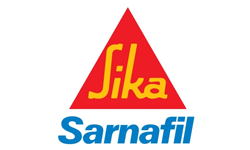The Timeline for Your Next Roof Replacement: What to Expect

Replacing your roof is a significant investment in your home’s safety and value. Whether you’re addressing damage from severe weather or upgrading an aging roof, careful planning is key to ensuring the process goes smoothly and meets your expectations. This guide will walk you through everything you need to know about preparing for a roof replacement, from evaluating your current roof to selecting the right materials and contractor.
Why Plan Ahead for Your Roof Replacement?
A roof replacement is more than just a construction project; it’s an opportunity to enhance your home’s durability, energy efficiency, and curb appeal. By taking the time to plan, you’ll avoid unnecessary delays, budget overruns, and potential mistakes.
Whether you’re a first-time homeowner or have replaced a roof before, following these steps will help you navigate the process with confidence.
Step 1: Assess the Condition of Your Roof
Before diving into a roof replacement project, it’s important to understand the current state of your roof. Conduct a thorough inspection to identify signs of damage, such as:
- Missing or cracked shingles
- Mold growth or water leaks
- Sagging areas or structural concerns
- Clogged gutters or damaged flashing
For areas you can’t safely access, consider hiring a professional residential roofing contractor to perform an inspection. A comprehensive evaluation ensures you’re fully aware of any underlying issues that need to be addressed during the replacement process.
Step 2: Research Roofing Materials
Once you’ve assessed your roof, it’s time to select the materials for your new roof. The type of roofing material you choose will impact your home’s appearance, energy efficiency, and overall durability. Common options include:
- Asphalt shingles: Affordable and versatile, available in various colors and styles.
- Metal roofing: Highly durable and weather-resistant, ideal for areas prone to severe weather.
- Clay or slate tiles: Long-lasting and elegant, but typically more expensive.
- Wood shingles or shakes: Natural and rustic, but require more maintenance.
When choosing materials, consider your local climate, budget, and the architectural style of your home. For example, if you live in a region with frequent storms, metal roofing might offer the best protection and longevity.
Step 3: Set a Realistic Budget
Roof replacement costs can vary widely depending on the size of your roof, material selection, and labor requirements. Setting a clear budget from the outset will help you make informed decisions and avoid surprises.
Key costs to consider include:
- Roofing materials and installation
- Disposal of old roofing materials
- Repairs to the roof deck or structure
- Labor and permits
Remember to include a buffer for unexpected expenses, such as structural repairs or weather delays.
Step 4: Find a Reliable Roofing Contractor
Choosing the right contractor is one of the most important steps in your roof replacement journey. A trustworthy contractor will ensure the project is completed on time, within budget, and to a high standard.
What to look for in a contractor:
- Proper licensing and insurance
- Positive reviews and references from past clients
- A clear and detailed estimate
- A warranty for both materials and labor
Take your time to research and compare contractors. Ask for recommendations from friends or neighbors, and don’t hesitate to request multiple quotes before making your decision.
Step 5: Prepare Your Home for Roof Replacement
Once your contractor is chosen and the project is scheduled, it’s time to prepare your home for the replacement process. Here are some tips to make the process smoother:
- Clear the attic: Remove any valuable or fragile items to protect them from dust and debris.
- Prune trees near the roof: Trim back overhanging branches to give workers easy access to the roof.
- Discuss safety precautions: Work with your contractor to establish a safety plan, especially if children or pets will be home during construction.
Proper preparation will minimize disruptions and keep your property safe during the project.
Step 7: Maintain Your New Roof
Your new roof is an investment in your home’s future. To keep it in top condition, follow these maintenance tips:
- Schedule regular inspections: Annual checkups can help catch minor issues before they become major problems.
- Clean gutters regularly: Clogged gutters can lead to water damage and roof leaks.
- Repair damage promptly: Addressing issues like missing shingles or small leaks early will prevent costly repairs down the line.
- Trim nearby trees: Overhanging branches can scratch or damage your roof, so keep them trimmed back.
Proactive maintenance will extend the life of your roof and protect your investment.
Why Choose Clark Roofing for Your Roof Replacement?
At Clark Roofing, we specialize in delivering high-quality roofing solutions tailored to each homeowner’s needs. From the initial consultation to the final inspection, our experienced team is dedicated to ensuring your roof replacement is smooth, efficient, and stress-free.
Why partner with us?
- Extensive experience in residential and commercial roofing
- Expertise in a wide range of materials, including metal, asphalt, and tile
- Commitment to quality workmanship and customer satisfaction
- Competitive pricing and transparent estimates
Take the First Step Today
Don’t wait until a small issue turns into a major problem. Replacing your roof is a smart investment in your home’s safety, energy efficiency, and overall value. With careful planning and the right team by your side, the process can be simple and hassle-free.
Contact Clark Roofing today to schedule your consultation. Let us help you protect your home with a durable, beautiful roof that will stand the test of time.

































